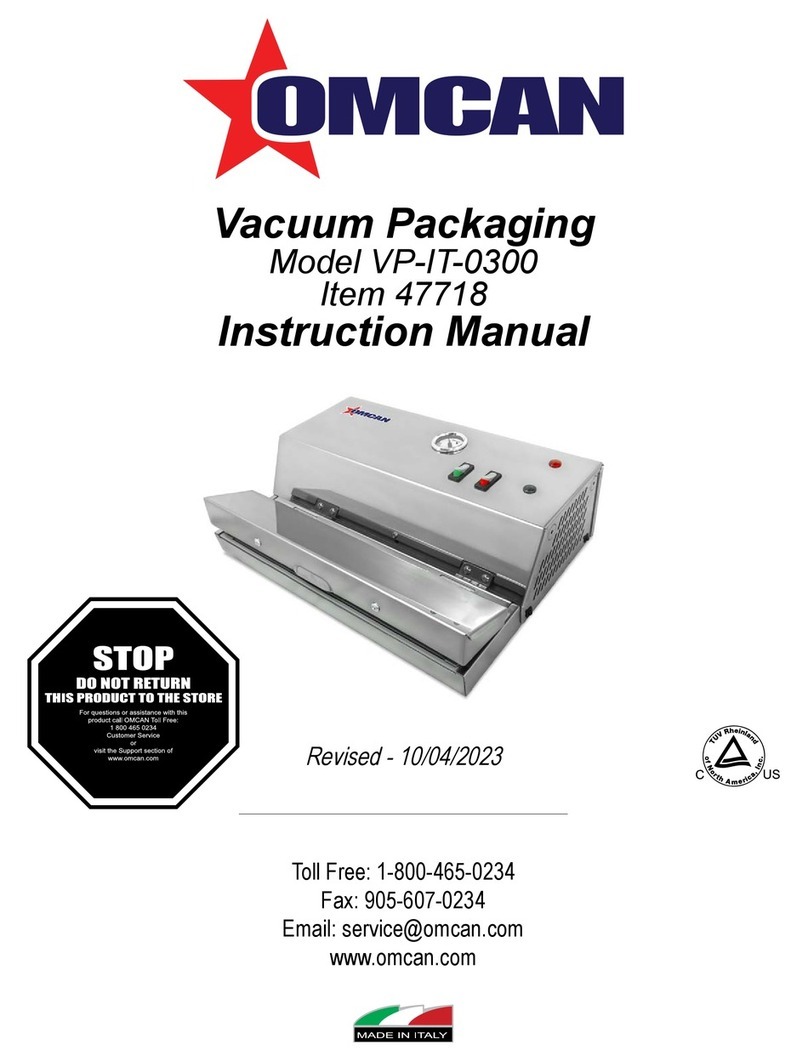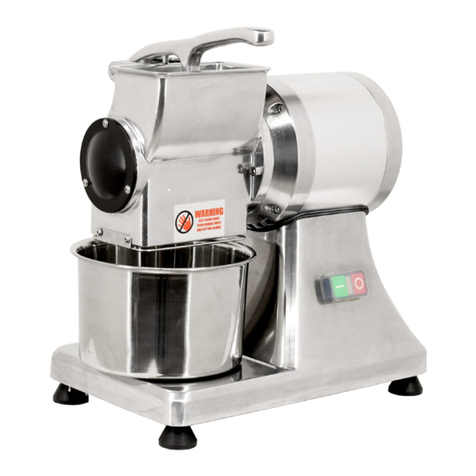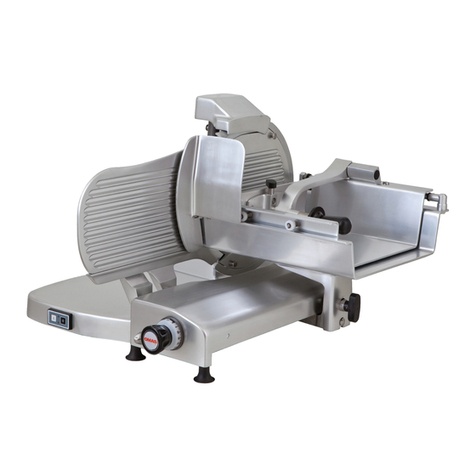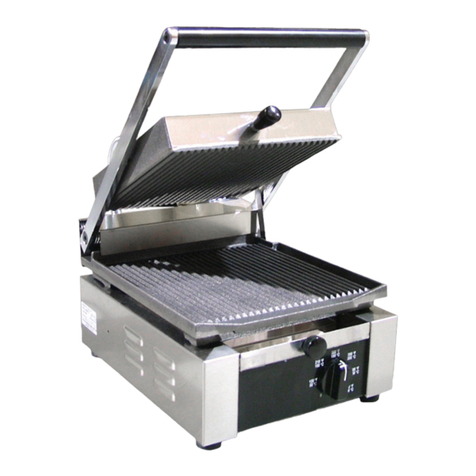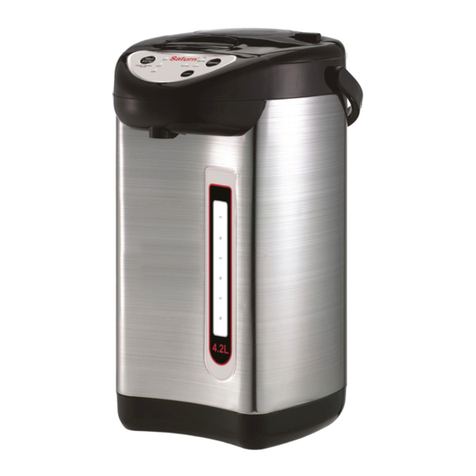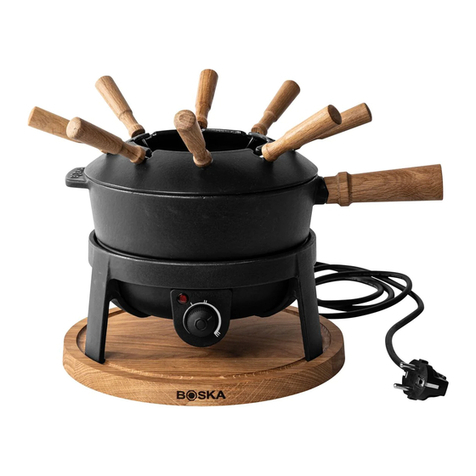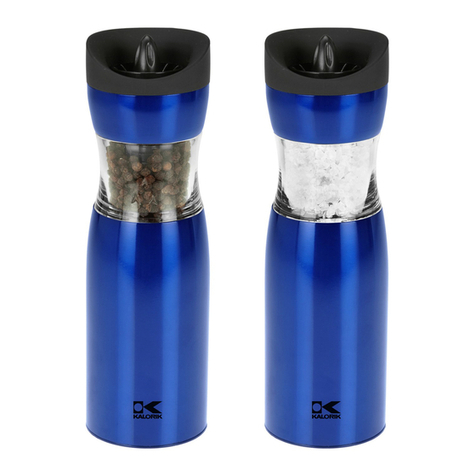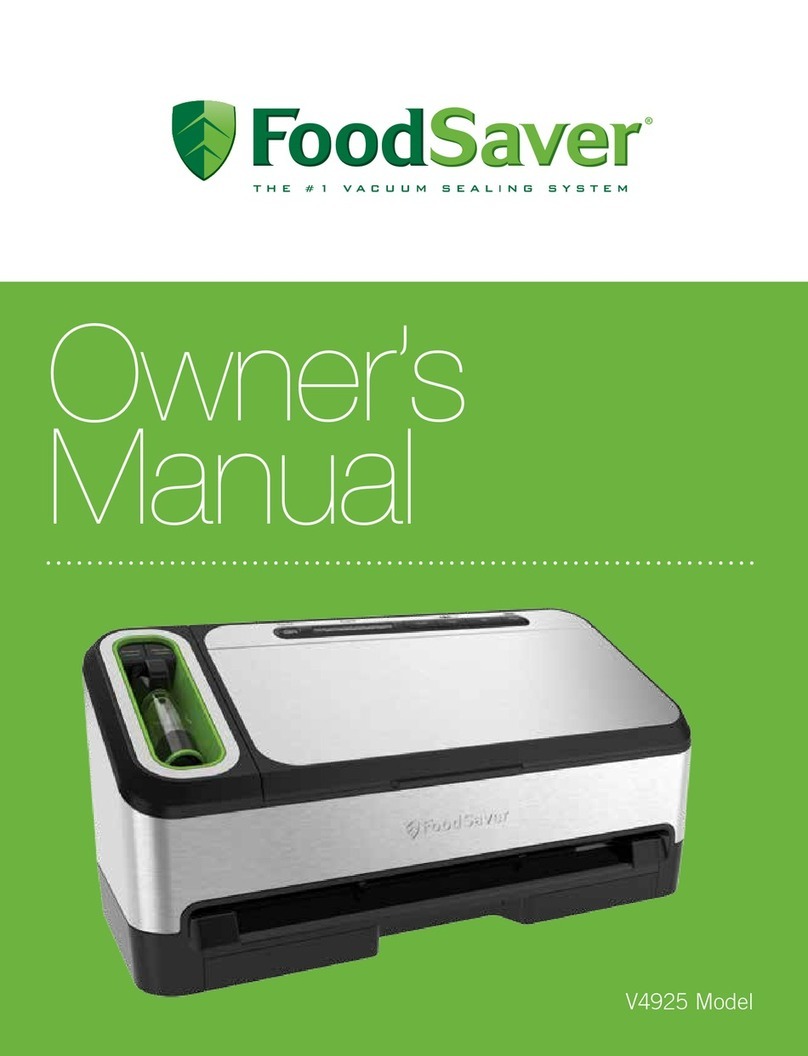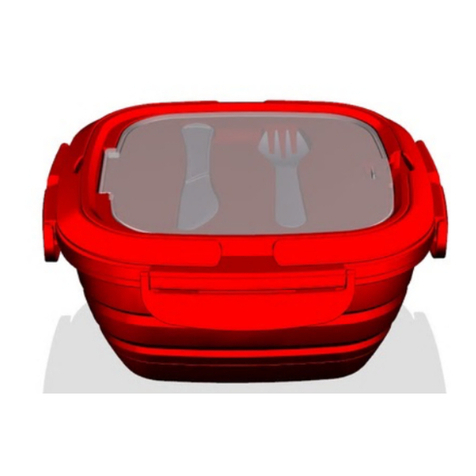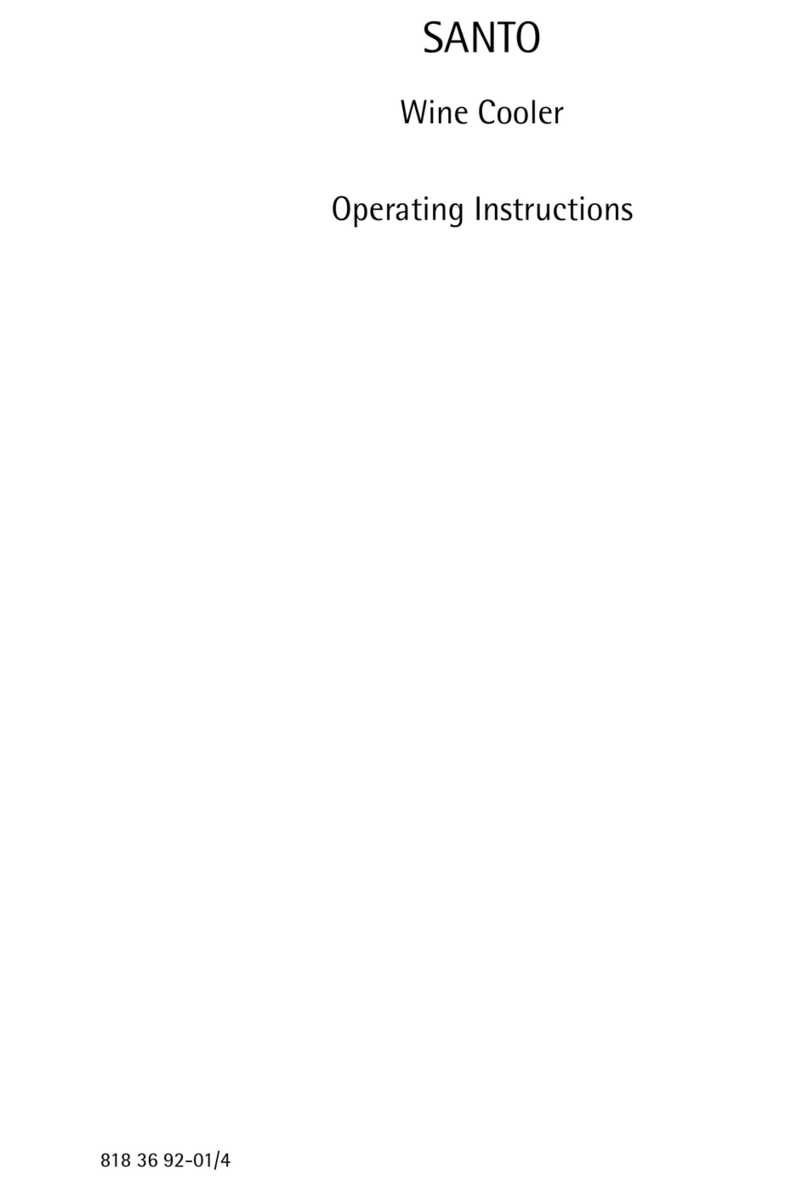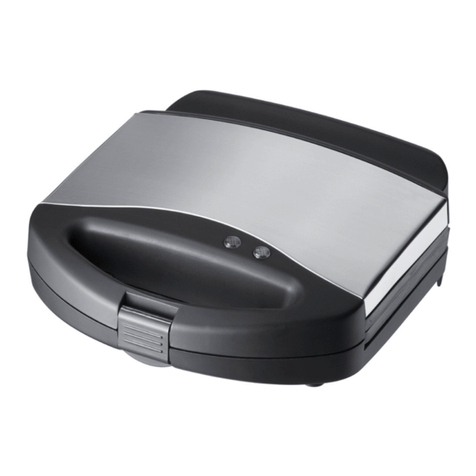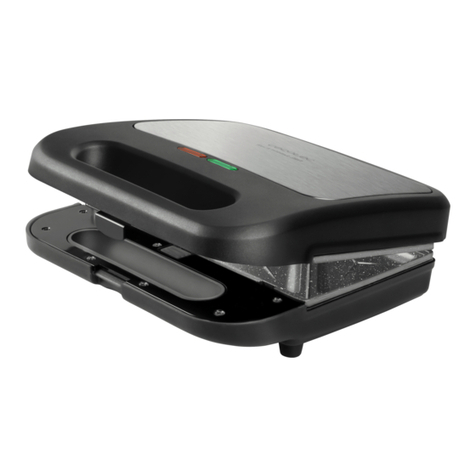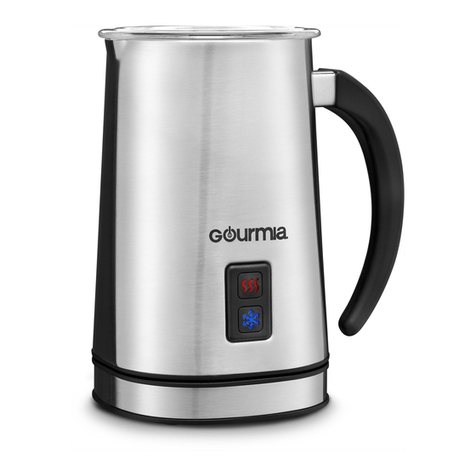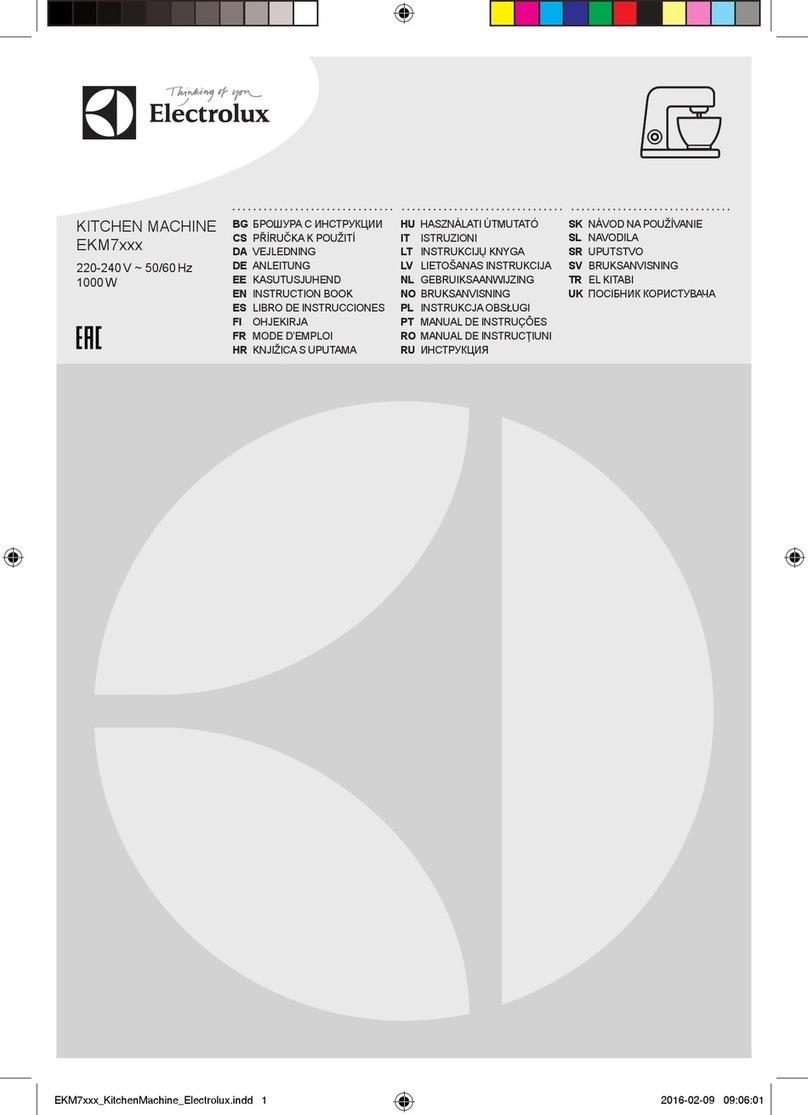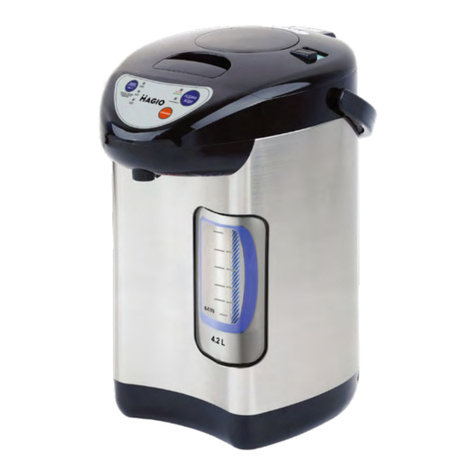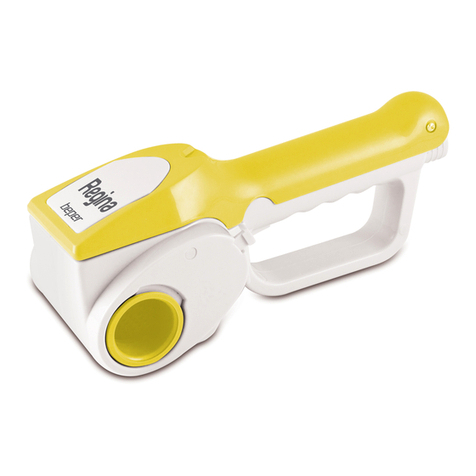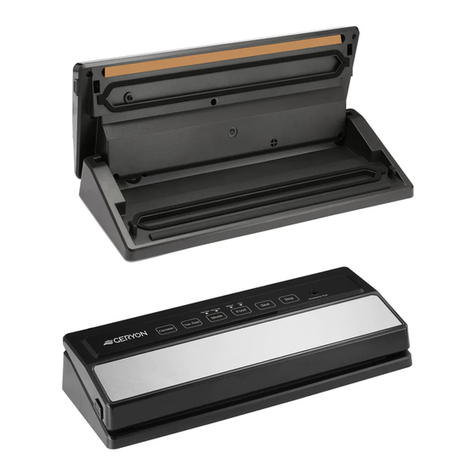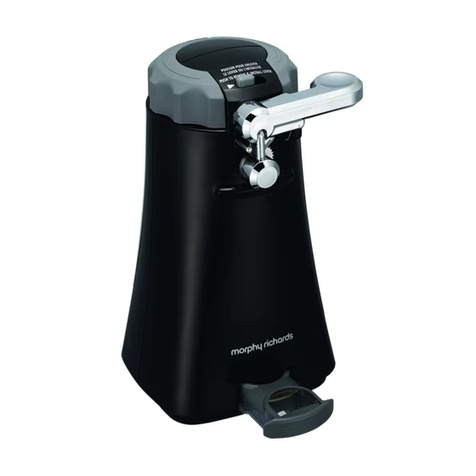Omcan F300TCV User manual

Version 1.1
Vertical Meat Slicers
Models F300TCV / F330TCV
F350TCV / F370TCV
Instruction Manual
1-800-465-0234
www.omcan.com
3115 Pepper Mill Court, Mississauga, ON, L5L 4X5
4450 Witmer Industrial Estates, Unit 4, Niagara Falls, NY, 14305

2
Page
-------------------------------------------------------------------------------- 3
------------------------------------------------------------------------------ 3 - 4
---------------------------------------------------------------------- 5 - 6
--------------------------------------------------------------------- 7 - 10
--------------------------------------------------------------------------------- 10 - 18
----------------------------------------------------------------------------- 19 - 20
-------------------------------------------------------------------------- 21 - 40
---------------------------------------------------------------------------- 41
---------------------------------------------------------------------------- 43
Table of Contents
Section
General Information
Safety & Warranty
Technical Specications
Installation & Operation
Maintenance
Troubleshooting
Parts Breakdowns
Electrical Schematics
Warranty Registration
Model F300TCV / Model F330TCV / Model F350TCV / Model F370TCV

3
General Information
Safety & Warranty
Omcan Manufacturing And Distributing Company Inc. and Food Machinery Of America, Inc. dba Omcan
are not responsible for any harm or injury caused due to any person’s improper or negligent use of
this equipment. The product shall only be operated by someone over the age of 18, of sound mind, and
not under the inuence of any drugs or alcohol, who has been trained in the correct operation of this
machine, and is wearing authorized, proper safety clothing. Any modication to the machine voids any
warranty, and may cause harm to individuals using the machine or in the vicinity of the machine while
in operation.
This manual contains all the necessary information to install, use and service the gravity slicers for food
(please see models in paragraph “Technical Description”). The scope of this document, hereinafter the
“manual”, is to permit users, and especially end users, to take all the cautions and provisions possible for using
this machine safely and for a long time.
LIMITS OF USE – SAFETY NORMS
These machine were designed and built to slice foodstuff in compliance to the norms of the CE 2006/95/EEC,
93/68/EEC, 2006/42/EEC, 2002/72/EEC, 2004/108 CE, REG 1935/2004/EEC, 2002/95/CE (RoHS) and to the
following regulations EN1974, EN ISO12100-1, EN ISO12100-2, EN 294, EN60204-1, EN60335-1, EN60335-
2-64.
GENERAL SAFETY REGULATIONS
The slicers must be used only by suitably trained personnel. Furthermore, this personnel must have read this
manual carefully. In particular, please comply to the following instructions:
• Install the machine according to the instructions contained in the “Installation” section;
• Do not remove the transparent protections, do not modify nor exclude the mechanical and electrical safety
devices;
• Do not use the machine with improvised connections, or provisional or non insulated cables;
• Check the power cable and gland plate on the machine body regularly and when necessary have them
replacedbyqualiedpersonnel;
• In case of anomalies, defective operation, incorrect movement, unusual noise, etc stop the machine
immediately;
• Before cleaning or servicing, disconnect the machine from the mains;
• Always use scratch-proof and non-slip gloves during cleaning or maintenance;
• Lay or remove the goods to be sliced on the sliding plate only when the latter is completely pushed back
and the thickness control knob positioned to 0;
• To move the carriage tray when slicing, use the handle or the product grip handle;
• For extraordinary maintenance (to replace the sharpener wheels, the blade, or others) please contact the
manufacturerorqualiedanddulyauthorizedpersonnel;

4
Safety & Warranty
• Avoid running the slicers with no product on it;
• The slicers are equipped with a ventilated motor. Extended continual use is not recommended. Let the
motor cool down after 30 minutes of use.
1 YEAR BENCH WARRANTY
MANUFACTURER’S WARRANTY AND LIABILITY
The manufacturer’s warranty covering the good functioning of the machines and their compliance to the
service for which they have been designed depends on the correct application of the instructions contained in
this manual. The Manufacturer assumes no liability either direct or indirect deriving from:
• Failure to comply with the instructions contained in this manual;
• Use of the machine by personnel who has not read or fully understood the content of this manual;
• Usenotcomplyingtothespecicnormscurrentlyapplicableinthecountryofinstallation;
• Unauthorizedmodicationsand/orrepairs;
• Use of non original accessories or spare parts;
• Exceptional events.
ENVIRONMENTAL CONDITIONS OF USE
Temperature: from -5 °C a + 40 °C
Relative humidity: max 95%
OPENING THE BOX
On reception check packaging integrity, otherwise inform the forwarding agent or the area agent immediately.
To unpack the machine, proceed as follows:
• Open the box and remove your copy of the manual of use and maintenance, then proceed according to the
instructions found on that manual;
• Lift the machine still wrapped in a transparent polyethylene sheet and extract it from the box;
• Now check the box content and make sure it corresponds to what shown on the external label.
WARNING:
The packaging components (cardboard,
polyethylene,andothers)areclassiedas
normal solid urban waste and can therefore be
disposedofwithoutdifculty.In any case, for
suitable recycling, we suggest disposing
of the products separately (differentiated
waste) according to the current norms.
DO NOT DISCARD ANY PACKAGING
MATERIALS IN THE ENVIRONMENT!

5
Technical Specications
The machine is essentially made of a base supporting a circular blade mounted in a vertical position. This
blade is driven by an electrical motor to slice foodstuffs. The machine is equipped with a carriage holding a
product tray and sliding on a bar mounted under the base top, parallel to the blade. Slice thickness is adjusted
by means of a gauge plate mounted in front of the blade. This plate, against which rests the product to be
sliced is moved transversely with respect to the blade by a value corresponding to the desired slice thickness.
The product is fed to the machine towards the gauge plate. All the machine components are made of polished
andanodicallyoxidizedaluminiumalloy,ofstainlesssteelandfoodgradeplasticmaterial.Thebladeisdriven
by an electrical motor, transmission is by means of a longitudinally grooved belt. The machine is started and
stopped by a control button or switch. These models have a built-in blade sharpener.
MECHANICAL AND ELECTRICAL SAFETY DEVICES
The following mechanical safety devices were installed:
• A series of aluminium and transparent plastic guards on the product carriage.
On request the following are available:
• Safety micro-switch preventing the motor from starting when the blade guard is removed.
WARNING: RESIDUAL RISKS
Notwithstanding all the possible cautions taken during the design and the construction of the
machine, residual risks (cutting) still exist during use or during cleaning or maintenance. Therefore be
careful and PAY THE UTMOST ATTENTION to what you are doing. DO NOT use the machine if you are
not in perfect psychological and physical conditions. DO NOT ALLOW anyone near the machine when
it is in use. ALWAYS wear gloves that can resist cuts or tears when cleaning, lubricating or sharpening
the blade. Slice only the products mentioned as sliceable. NEVER try to slice products that have been
mentioned as non sliceable.
ACCESSORIES
Ifnototherwisedenedatthemomentoforder,themachinesaresuppliedtogetherwiththefollowing:
• Instructions manual for installation, use and maintenance.
PRODUCTS THAT CAN BE SLICED
• All types of cold cuts (raw, cooked, smoked);
• Meat without bone (raw or cooked, at a temperature not less than + 3 °C);
• Vegetables (all types).

6
PRODUCTS THAT MUST NOT BE SLICED:
• Frozenordeep-frozenfood;
• Foodcontainingbones(meatorsh);
• Any other non-food product;
• Cheese.
MAIN COMPONENTS
F300TCV
F330TCV
F350TCV
F370TCV
1. Startup Button 11. Blade
2. Stop Button 12.ManufacturerIdenticationPlate,MachineData
3. Slice Thickness Control Knob 13.ProductGripHandProtection
4. Adjustable Foot 14.ProductProtection
5. Carriage Tray Support 15.ProductTrayHandle
6. Base 16.BladePlateTie-Rod
7. ProductTray 17. Supply Cord
8. BladePlate 18.GaugePlate
9. ProductGrip 19. Sharpener
10. Blade 20.ProductTray
11.ProductGripHandle 21. Slices Guard
Illustrations may differ from actual machines.
Technical Specications

7
Installation & Operation
INSTALLING THE MACHINE
Positionthemachineonawelllevelled,smoothanddrytopsuitablydimensionedtowithstandthemachine
weight.
ELECTRICAL CONNECTION
Install the machine near a compliant outlet derived from a system meeting the current norms.
The user is responsible for ascertaining that the electrical system is suitably dimensioned and functions
correctly (supply line, outlet, distribution panel, differential protecting breaker, grounding).
Before carrying out the connection ascertain that the mains characteristics correspond to those indicated on
the machine plate.
COMMANDS
START AND STOP BUTTONS
• Turn the switch or press the white or green button (1) to start running the blade;
• The light turns on to indicate that the machine works correctly;
• Turn the switch or press the red or black button (3) to stop the blade.
Slice thickness can be adjusted by turning the graduated knob (4) counterclockwise.
Thickness adjustment range: see paragraph “Technical description and conditions of use”

8
Installation & Operation
FUNCTIONING TEST AND BLADE ROTATION DIRECTION
Start the machine and check whether the light is on; make sure that the blade rotates in the direction indicated
by the arrow (counterclockwise if you look at the machine from the blade plate side).
• Ascertain that the carriage and the product grip slide correctly;
• Ascertain that the gauge plate works and adjust thickness to correct value.
USING THE MACHINE
LOADING THE PRODUCT ON THE TRAY AND SLICING
Ascertain that the thickness control knob is correctly positioned to ‘0’;

9
• Draw back the carriage completely (towards the operator) to loading position;
• Lift the product grip and set it in at rest position;
• Lay the product to be sliced on the tray;
• Secure by means of the product grip by exerting a slight pressure;
Installation & Operation

10
Installation & Operation
• Adjust the thickness gauge. Start the blade by turning the switch or by pressing on the white or green
button;
• Grip the handle of the product grip and start the forward and backward slicing movement. The product
travels towards the gauge plate by pushing towards the blade;
• Whennished,returnthethicknesscontrolknobto‘0’anddrawthecarriageback.;
• Stop the blade by turning the switch or by pressing the red or black button.
Maintenance
CLEANING THE SLICER
GENERAL
The machine must always be accurately cleaned at least once a day, and more often if necessary. Always wear
protective gloves.
DISASSEMBLING THE MACHINE FOR CLEANING
• Disconnect the plug from the mains;
• Turn the gauge plate knob to ‘0’;

11
Maintenance
• Remove the various components as described in the following paragraphs.
• Completely unscrew (counterclockwise) the blade guard rod;
• If the blade guard is blocked, press on the rod knob to move it a little;
• Extract the rod and remove the blade guard using for this operation only the side knobs.
• Loosenandremovethetwoxingscrewswithknurledhead;
• Remove the slice guard.

12
Maintenance
DISASSEMBLING THE SHARPENER
• Loosen the sharpener blocking side knob;
• Remove the complete sharpener unit by pulling it upwards.

13
Maintenance
DISASSEMBLING THE PRODUCT TRAY
• Loosen the knurled screw as shown in the picture and remove the tray by lifting it.
To clean the machine body and the blade use only a cloth damped with water and biodegradable
lathery detergent having 7-8 pH and at a temperature not below + 30°C.
Do not clean the machine by using water or vapor spouts or similar systems.
WARNING: Use scratch proof and non-slip gloves to carry out the following operations. Proceed
carefully and pay attention to what you are doing.
DANGER OF CUTTING!
Cleaning the blade:
Pressaclothdampedwithwateroverthebladesurfaceandslowlymoveitfromthecentretotheexternalside,
as shown in the picture, over the blade guard side and the opposite side.

14
Maintenance
Cleaning the optional safety ring:
PassaclothdampedwithwaterthroughtheBladeandthesafetyringasshowninthepicture.
Cleaning of the section under the product tray and of sliding plate
Bring the sliding plate near to the operator and lift the product tray up to the rest position. Clean with a cloth
damped with water and carefully dry.
REASSEMBLING THE MACHINE
Proceedasindicatedforthepreviousoperationsbutinreverseorder.
GENERAL
The operator is allowed to perform the following maintenance operations:
• Blade sharpening: regularly (intervals and duration obviously depend on the use of the equipment, time of
use and type of product sliced);

15
Maintenance
• Lubrication of carriage sliding guides: once a week.
• Lubrication of product grip sliding bar: once a week.
• Adjustment of motor belt tension: as required.
• Checking the power supply cord conditions and of the gland plate: from time to time.
WARNING: Maintenance must always be carried out when the machine is disconnected from the mains and if
nootherpositionisspecicallyrequired,withthethicknesscontrolknobon‘0’.
Thefollowingmaintenanceoperationsaretobeentrustedonlytopersonnelauthorizedbythemanufacturer:
• Replacing the blade;
• Replacing the sharpener wheels;
• Replacing the motor transmission belt;
• Replacing electrical system components under the machine base;
• Repairing structural parts, repairing the components under the base.
BLADE SHARPENING:
Before proceeding, clean the machine accurately as explained in the previous paragraphs:
WARNING: Sharpening can be done only up to 12 mm of the blade diameter value. Beyond this value, the
BLADEMUSTBEREPLACEDONLYbypersonnelAUTHORIZEDBYTHEMANUFACTURER.
Clean the blade accurately using denaturised alcohol to degrease it; Operate the graduated knob by turning it
towards the left to open completely;

16
Loosen the knob (1), lift and rotate the sharpener by 180° (2) and insert the wheels on the slicer blade.
Tighten the knob;
Operate the Blade by using the switch (3), keep the small button (4) pushed; Allow the blade to rotate for about
30 to 40 seconds then use the switch (5) to stop it.
Brush a pencil lightly on the external side of the blade to check for a slight spud; We advise performing this
operation with the utmost care, as the blade is extremely sharp.
Maintenance

17
If some spud is found, operate the switch (3) again for 3 to 4 seconds by pressing the buttons 4 and 6 at the
same time.
DO NOT PROLONG THIS OPERATION BEYOND THE FEW SECONDS MENTIONED OTHERWISE THE
BLADE EDGE WILL WARP.
After completing sharpening, we advise cleaning the wheels using a small brush and alcohol. Now return the
sharpener to its original position.
LUBRICATION
Carriage sliding guides product grip (once a week). Use only the oil provided; otherwise use white Vaseline oil.
DO NOT USE VEGETAL OILS.
Maintenance

18
• Spread a small quantity of oil on the bar and move the assembly 3 or 4 times;
• Clean as required to remove excess of oil.
ADJUSTMENT OF MOTOR BELT TENSION
After a given period of service an unusual noise may occur because of the belt bedding. In this case, tighten
the belt-stretcher on the side of the motor under the machine base.
• Disconnect the plug from the mains;
• Lift the machine and turn it on one side as shown in the picture;
• Unscrew the feet (1), unloose the screw (2) and remove the guard (3);
• Partiallyunscrewthenut(4);
• Turn the belt-stretcher (5) until the optimal tension of the belt is obtained (6);
• Tighten the nut (4) and install the guard (3), the screw (2) and the feet (1).
Maintenance

19
Troubleshooting
The table below indicates the most common problems that may arise during slicing and the necessary
remedies.
PROBLEM POSSIBLE CAUSE REMEDY
The machine does not start
when the start-up button (white
or green button) is pressed or
switch is turned.
• No power supply • Ascertain that the plug is
correctly inserted
• Defective electrical control
circuit
• Check
• Call technical assistance
The machine starts, but the
functioning light is not on.
• Defective indicator • Do not use the machine
when the pilot lamp is
not on; promptly ask for
technical assistance
The machine starts, but there
are vibrations. The motor is very
hot and there is a bad smell.
• Defective motor or
transmission.
• Do no use the machine;
promptly ask for technical
assistance
Under strain, the machine slows
down or comes to a stop.
• Defective transmission • Ask for technical assistance
Excessive resistance to product
slicing.
• The blade is blunt • Sharpen the blade
The slices are ragged and/or
shaped irregularly
• The blade is blunt • Sharpen the blade
• The blade is excessively
worn out
• Ask for technical assistance
Unsatisfactory blade sharpening • Worn wheels • Replace the wheels;
• Ask for technical assistance
The product tray doesn’t slide • Guidesareinsufciently
lubricated
• Lubricate
When the stop button is
pressed or turned, the machine
does not stop
• Defective electrical control
circuit
• Stop the machine, unplug
from mains and ask for
technical assistance
Unusual noise of transmission • Loose belt • Adjust belt tension
DISMANTLING THE SLICER
These machines are made of the following elements:
• Aluminium frame;
• Stainlesssteelttingsandothers;
• Electrical parts and cords;
• Electrical motor;
• Plasticmaterials,etc.
Whether dismantling is entrusted to third parties please note that disposal of the materials can only be carried

20
Troubleshooting
outbydulyauthorizedbusinesses.Whetherdismantlingdonein-houseitisnecessarytoseparatematerials
according to their category, entrusting disposal skilled and authorised companies. In any case, please comply
to the current norms of your country.
WARNING
In any case, to remove the blade and dispose of it, you must contact the manufacturer or personnel
duly authorized by the manufacturer. NEVER DISPOSE OF WASTE IN AREAS WHERE ACCESS IS NOT
DELIMITED BY BARRIERS AND FORBIDDEN BY WARNING SIGNS AS THIS WASTE REPRESENTS A
SERIOUS DANGER FOR PEOPLE, ESPECIALLY FOR CHILDREN, AND ANIMALS. ANY RESPONSIBILITY
ARISING OUT OF INCORRECT DISPOSAL FALLS ON THE OWNER.
Guide to the treatment of waste equipment
This product complied with Directive 2002/96 /EC.
The crossed out wheeled bin symbol on equipment or its packaging indicates that at the end of its
working life the equipment should not be treated as general household waste but taken to one of the recycling
centres for electrical and electronic equipment run by local authorities. Alternatively, it may be handed over
to the reseller when purchasing new equipment of the same type. The user is responsible for consigning the
equipment to appropriate collection facilities at the end of its working life or face the penalties provided for
by current waste management legislation. Separate collection for subsequent delivery of waste equipment to
environmentally-compatible recycling, treatment and disposal facilities to prevent possible negative impacts
on the environment and human health whilst encouraging recycling of the product’s components. For further
information regarding the available collection facilities, please contact your local refuse collection service or the
dealerfromwhomthepurchasewasmade.Themanufacturerand/orimporterfulltheirobligationsconcerning
environmentally-compatible recycling, treatment and disposal either individually or by joining a collective
scheme.
For parts or service call 1-800-465-0234.
This manual suits for next models
3
Table of contents
Other Omcan Kitchen Appliance manuals
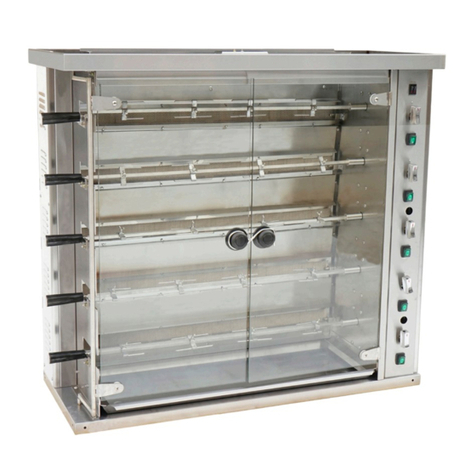
Omcan
Omcan CE-CN-KJ-5 User manual
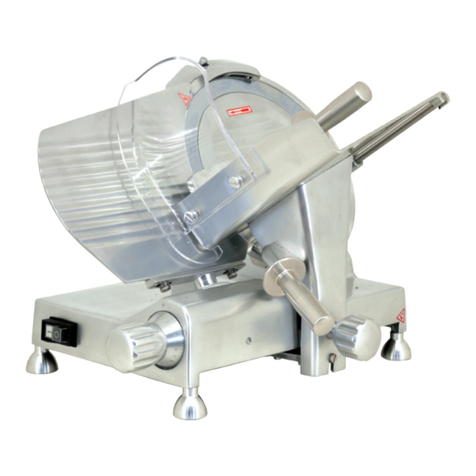
Omcan
Omcan MS-CN-0220-C User manual
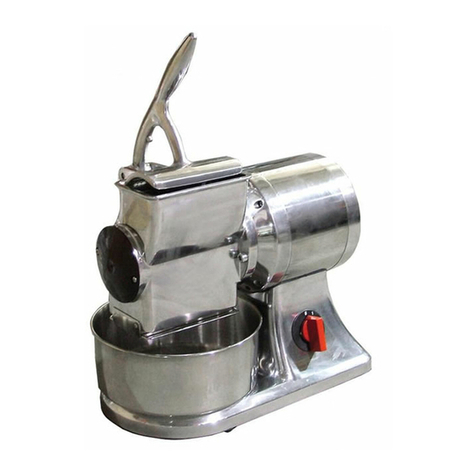
Omcan
Omcan FGS User manual
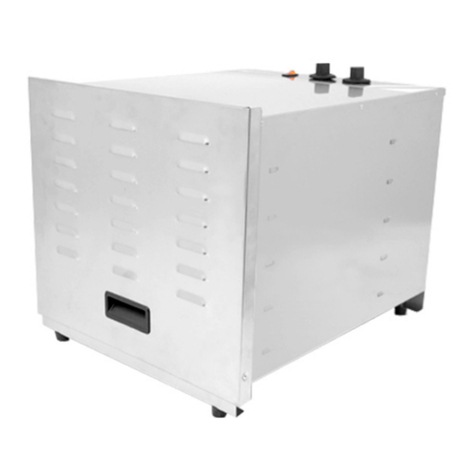
Omcan
Omcan CE-CN-0010-D User manual
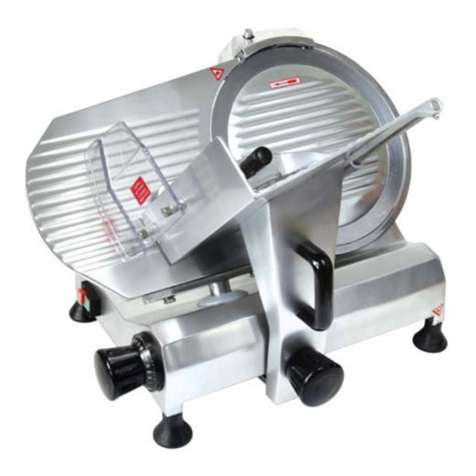
Omcan
Omcan HSB-300 Technical manual
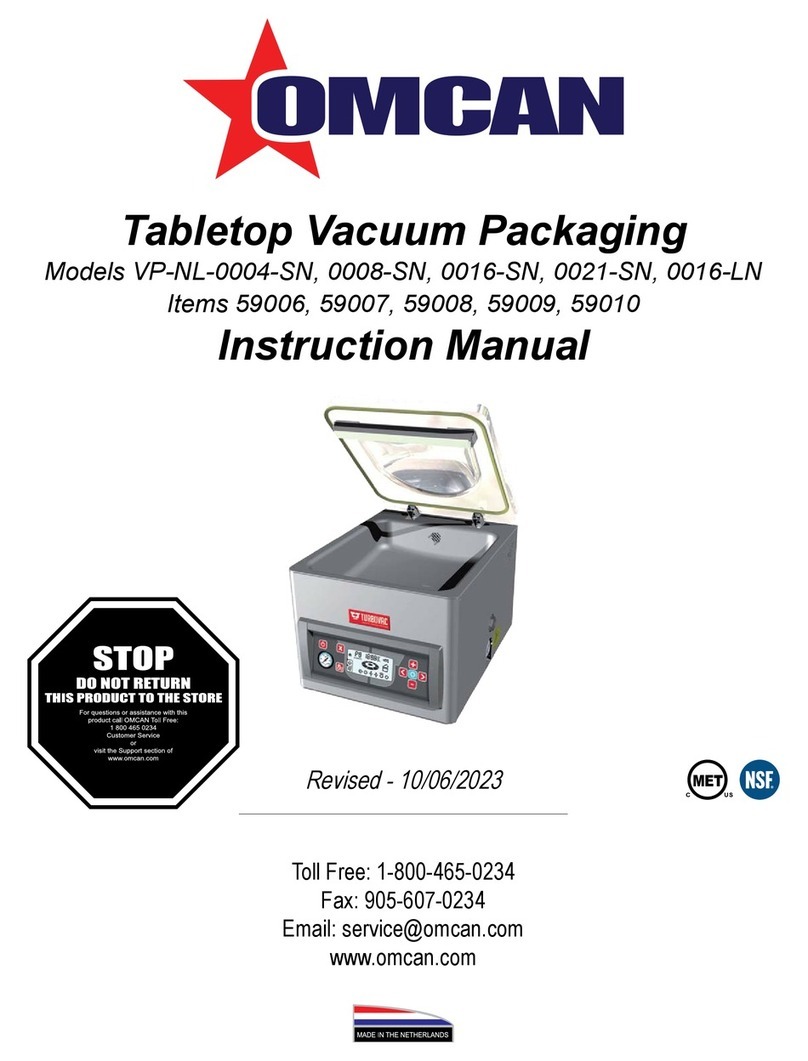
Omcan
Omcan VP-NL-0004-SN User manual
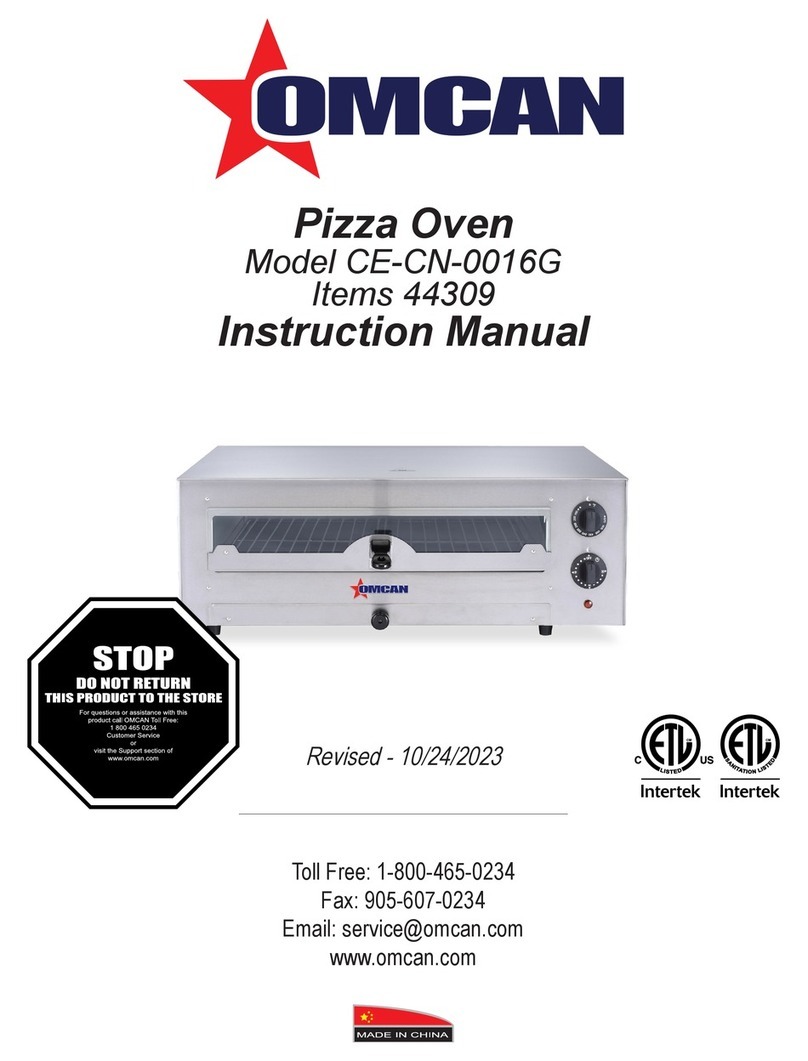
Omcan
Omcan CE-CN-0016G User manual
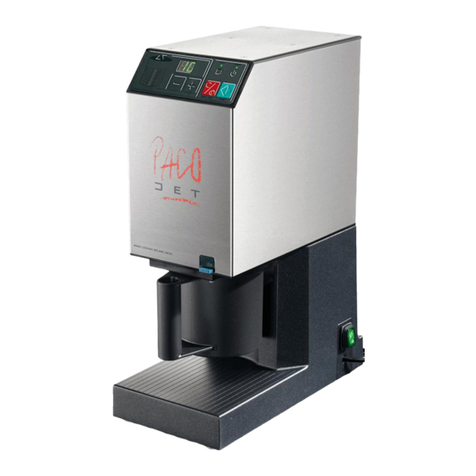
Omcan
Omcan PACOJET 1 User manual
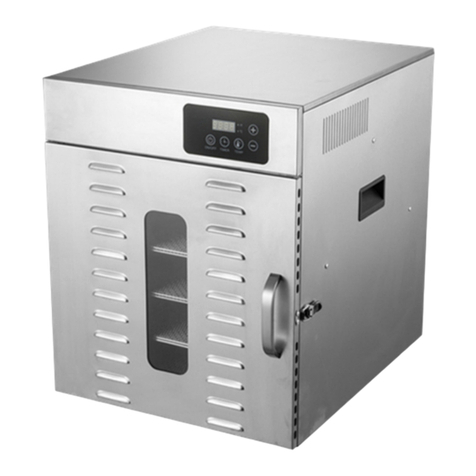
Omcan
Omcan CE-CN-0012-E User manual
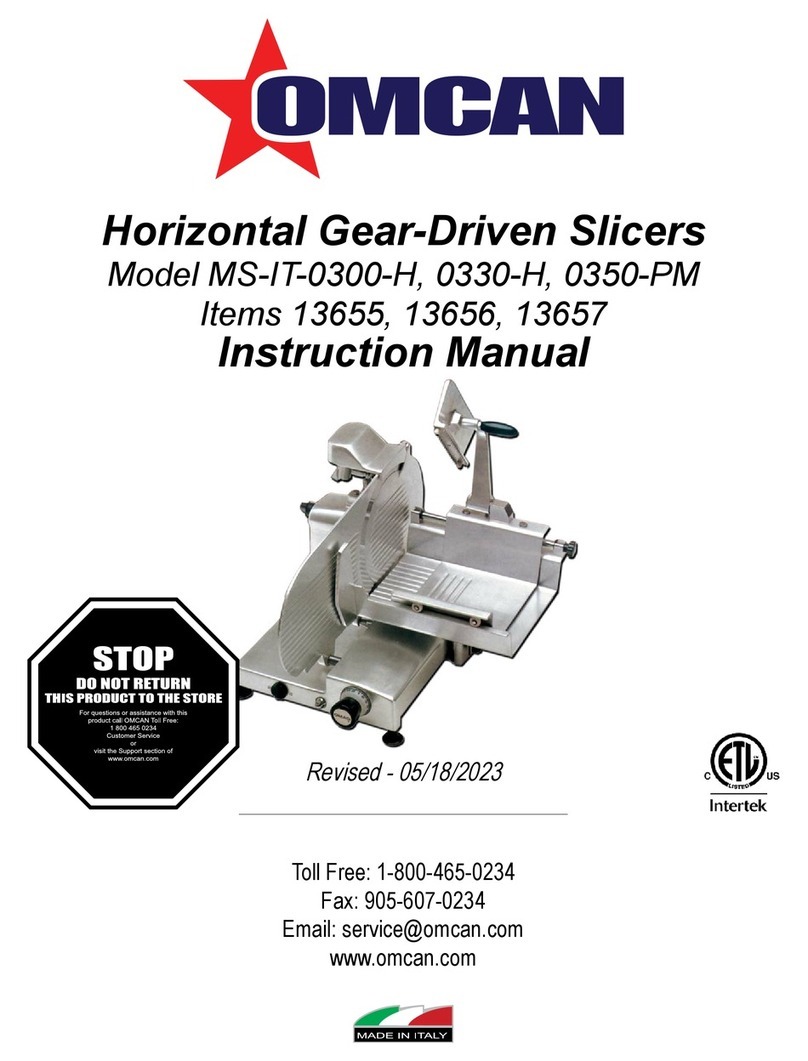
Omcan
Omcan 13655 User manual
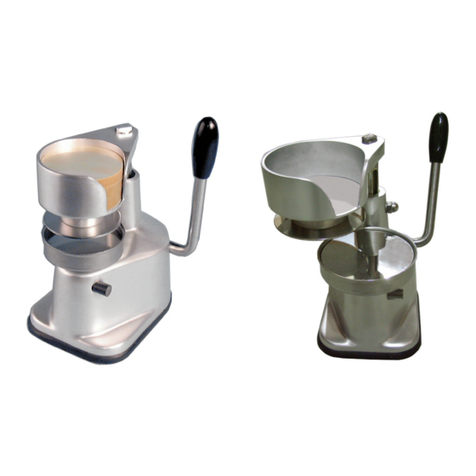
Omcan
Omcan BT10 User manual
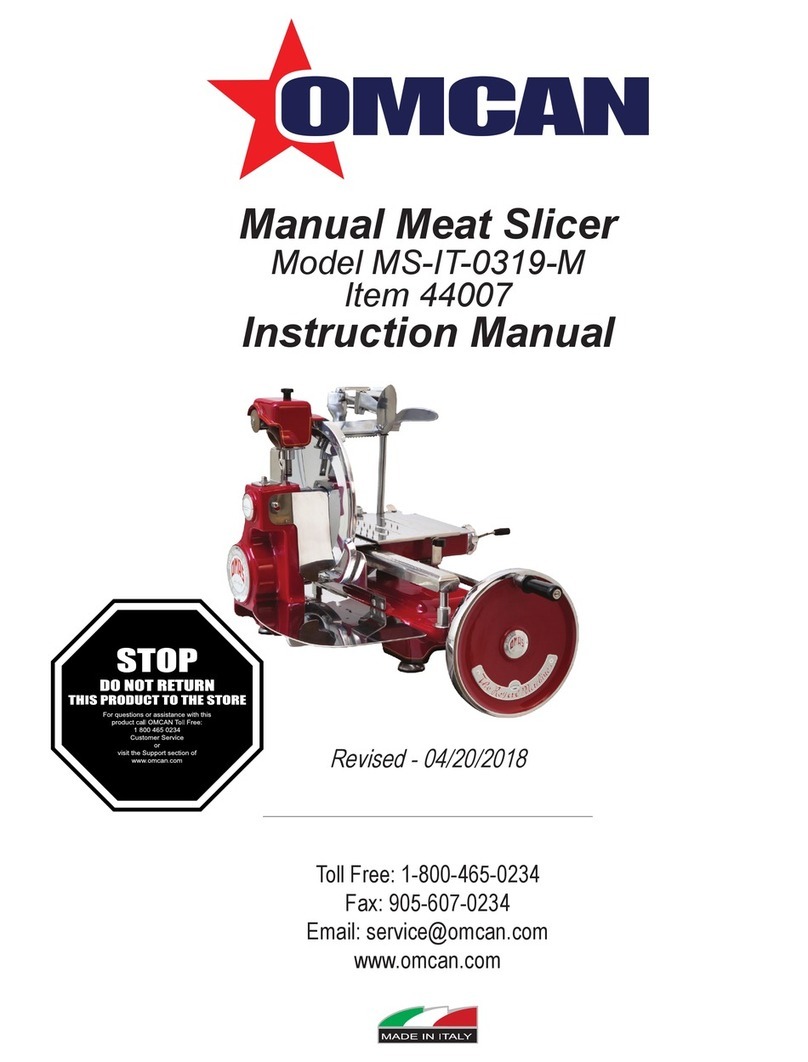
Omcan
Omcan MS-IT-0319-M User manual
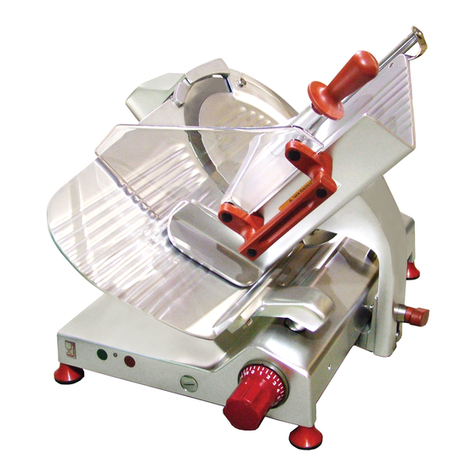
Omcan
Omcan MS-IT-0330-F User manual
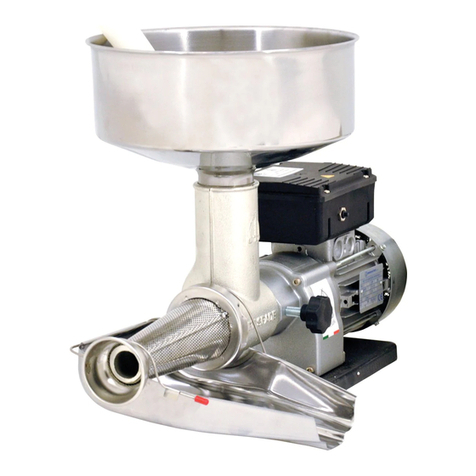
Omcan
Omcan TS-IT-0150 User manual
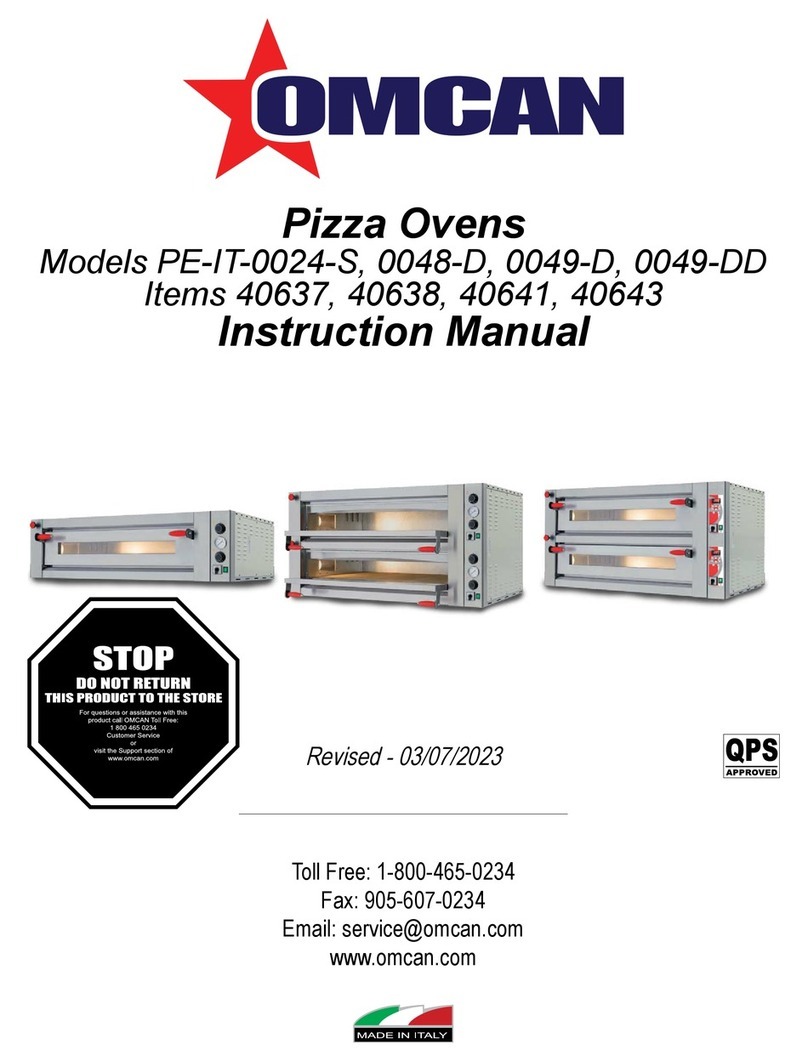
Omcan
Omcan PE-IT-0024-S User manual
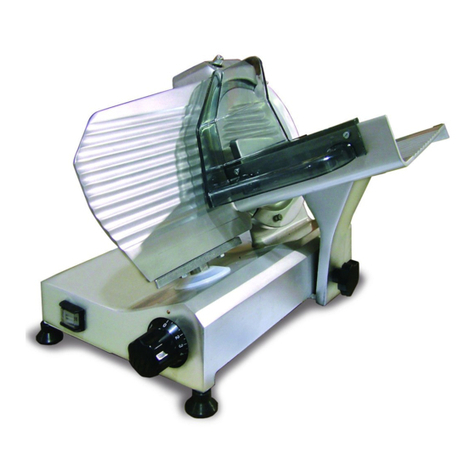
Omcan
Omcan MS-IT-0220-B User manual
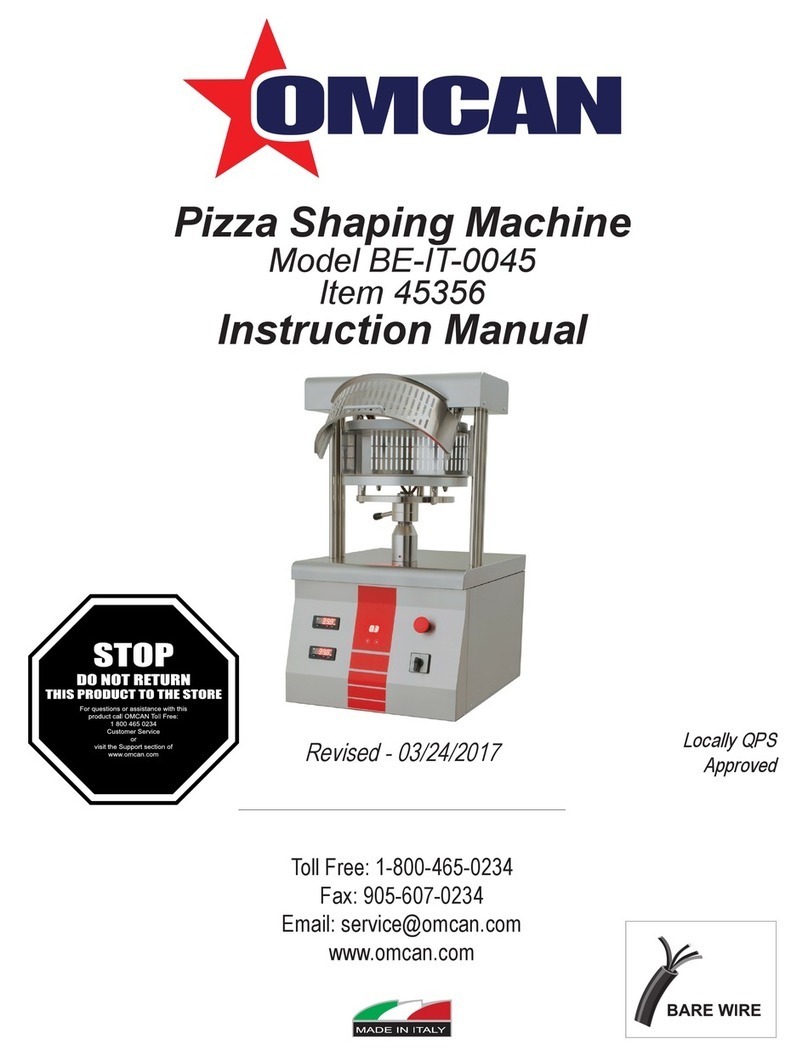
Omcan
Omcan BE-IT-0045 User manual
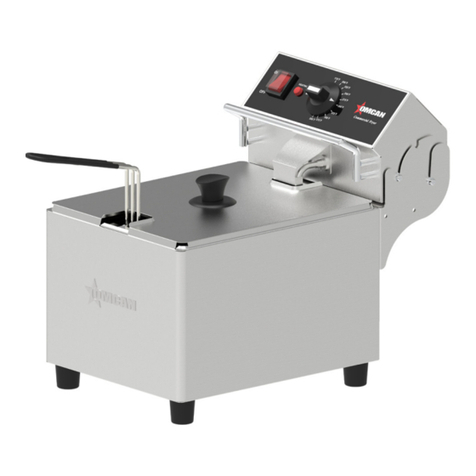
Omcan
Omcan CE-CN-0401 User manual
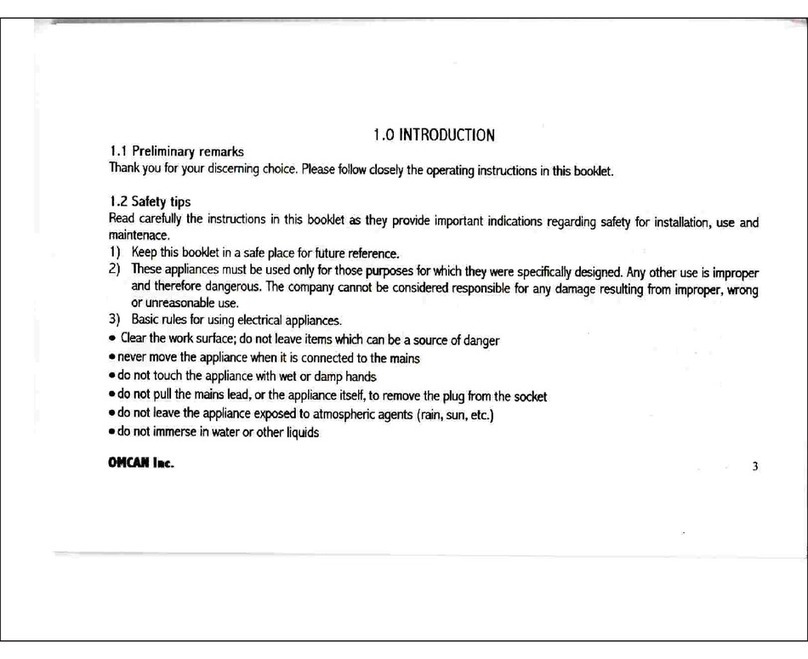
Omcan
Omcan FTS8 User manual
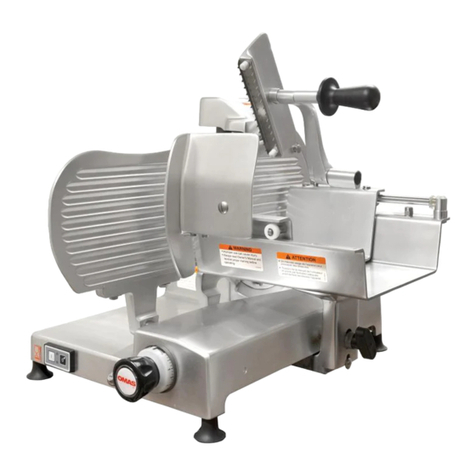
Omcan
Omcan MS-IT-0313-H User manual
